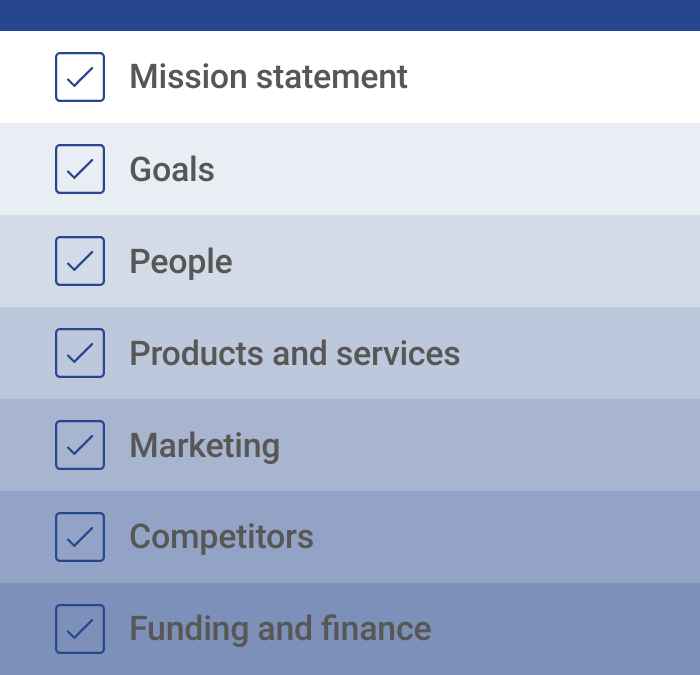Creating a business plan for your Limited Company (LTD) is a crucial step in setting the foundation for your business’s success. Here’s a comprehensive guide on how to structure your LTD company business plan for success.
1. Executive Summary
Purpose
The executive summary is the first section of your business plan, but it should be written last. It provides an overview of your entire plan, giving readers a preview of what to expect.
Key Elements
- Company Name and Location: Clearly state your company’s name and where it operates.
- Mission Statement: Summarise your business’s mission and core values.
- Business Objectives: Highlight your short-term and long-term goals.
- Products or Services: Briefly describe what your business offers.
- Market Opportunity: Explain the market need you aim to fulfil.
- Financial Highlights: Summarise projected revenue, profit, and growth.
2. Company Description
Purpose
This section provides detailed information about your LTD company, giving context to your business.
Key Elements
- Company Overview: Describe the history, legal structure and ownership of your business.
- Vision and Mission Statements: Articulate your company’s vision and mission in detail.
- Business Objectives: Outline specific, measurable objectives you plan to achieve.
- Location and Facilities: Describe your business premises and why they are suitable for your operations.
3. Market Analysis
Purpose
Market analysis demonstrates your understanding of the industry and market dynamics.
Key Elements
- Industry Overview: Provide an overview of your industry, including trends and growth potential.
- Target Market: Define your target market and customer segments.
- Market Needs: Identify the needs and demands of your target market.
- Competitive Analysis: Analyse your competitors, their strengths, weaknesses, and market position.
- Market Trends and Growth: Highlight key market trends and potential growth areas.
4. Organisation and Management
Purpose
This section outlines your business’s organisational structure and management team.
Key Elements
- Organisational Structure: Present an organisational chart showing roles and responsibilities.
- Ownership Structure: Explain the ownership structure of your LTD company.
- Management Team: Provide bios of key management team members, highlighting their expertise and experience.
- Advisors: List any external advisors, such as accountants, lawyers, or consultants.
5. Products or Services
Purpose
Detail your products or services, explaining their benefits and unique selling points.
Key Elements
- Product/Service Description: Describe each product or service in detail.
- Features and Benefits: Highlight the key features and benefits to customers.
- Development Stage: Explain the current stage of development and future plans.
- Intellectual Property: Note any patents, trademarks, or proprietary technology.
6. Marketing and Sales Strategy
Purpose
Outline your strategies for attracting and retaining customers.
Key Elements
- Marketing Strategy: Describe your overall marketing approach, including branding, positioning, and promotional strategies.
- Sales Strategy: Detail your sales process, including sales channels, sales tactics, and customer retention strategies.
- Pricing Strategy: Explain how you will price your products or services competitively.
- Advertising and Promotions: Outline your advertising and promotional plans, including digital marketing, traditional advertising, and public relations.
7. Funding Request
Purpose
If you are seeking funding, this section details your funding requirements and plans.
Key Elements
- Funding Requirements: Specify the amount of funding you need.
- Funding Purpose: Explain how the funds will be used.
- Future Funding: Indicate any future funding requirements and potential sources.
- Repayment Plans: Outline your plans for repaying any loans or investments.
8. Financial Projections
Purpose
Provide financial forecasts to demonstrate the financial viability of your business.
Key Elements
- Revenue Projections: Present projected revenues for the next three to five years.
- Profit and Loss Statement: Include projected profit and loss statements.
- Cash Flow Statement: Provide cash flow projections to show liquidity.
- Balance Sheet: Include a projected balance sheet.
- Break-Even Analysis: Show when your business will become profitable.
9. Appendix
Purpose
The appendix contains additional information and documents that support your business plan.
Key Elements
- CVs: Include cvs of key team members.
- Market Research: Attach detailed market research reports.
- Legal Documents: Provide copies of important legal documents, such as incorporation papers and contracts.
- Product Photos: Include photos or diagrams of your products.
- Additional Financial Information: Attach any additional financial data or charts.
A well-structured business plan is your plan to success. It not only helps you clarify your business goals and strategies but also convinces stakeholders of your business’s potential. By following this guide, you can create a comprehensive and compelling business plan that sets your LTD company on the path to success. Remember, a business plan is a living document that should be reviewed and updated regularly to reflect your company’s growth and changes in the market.


